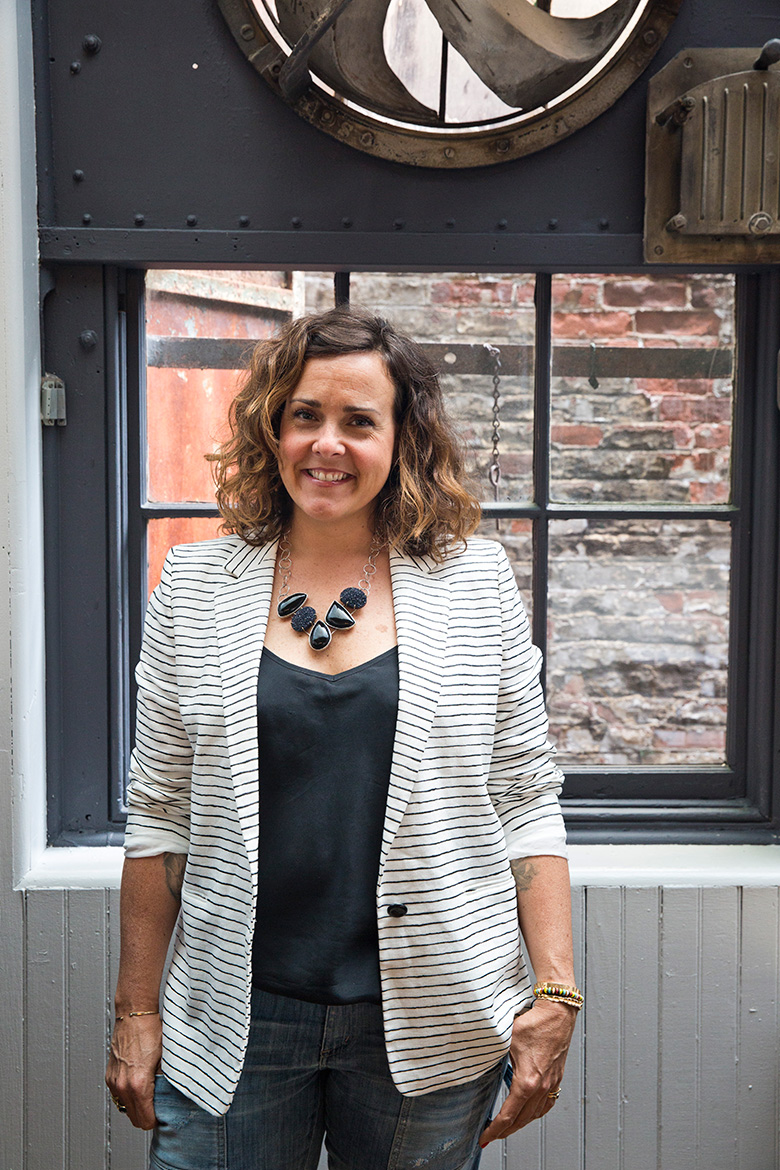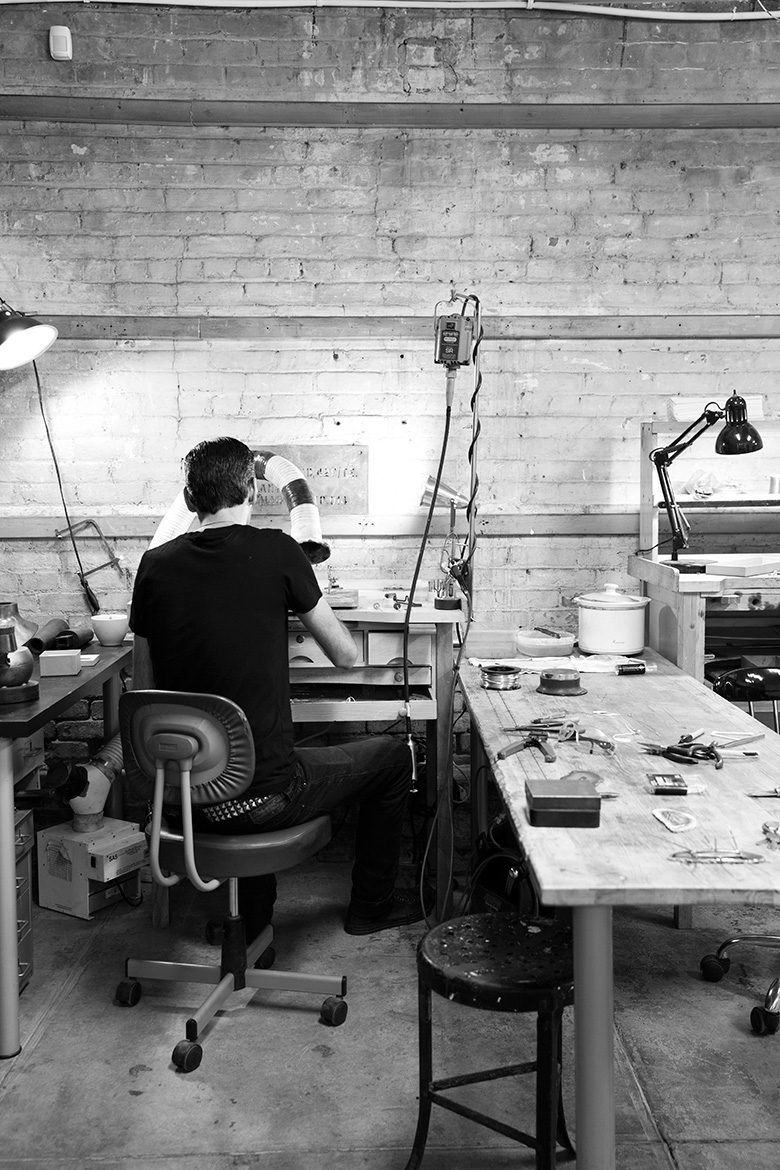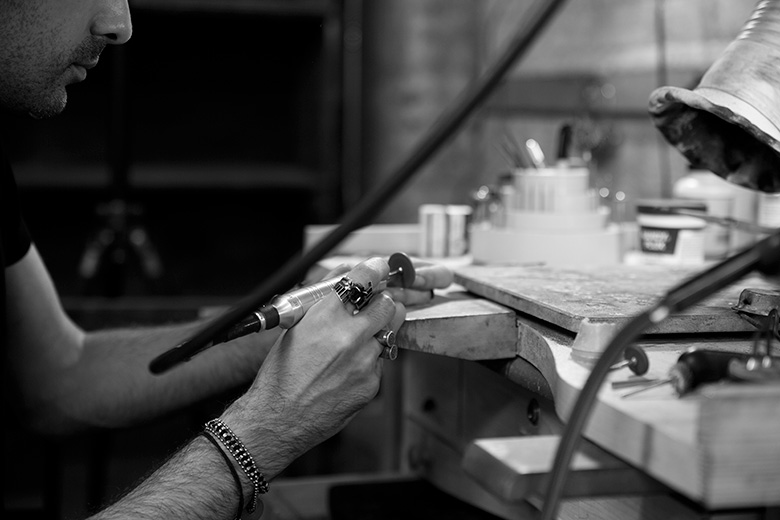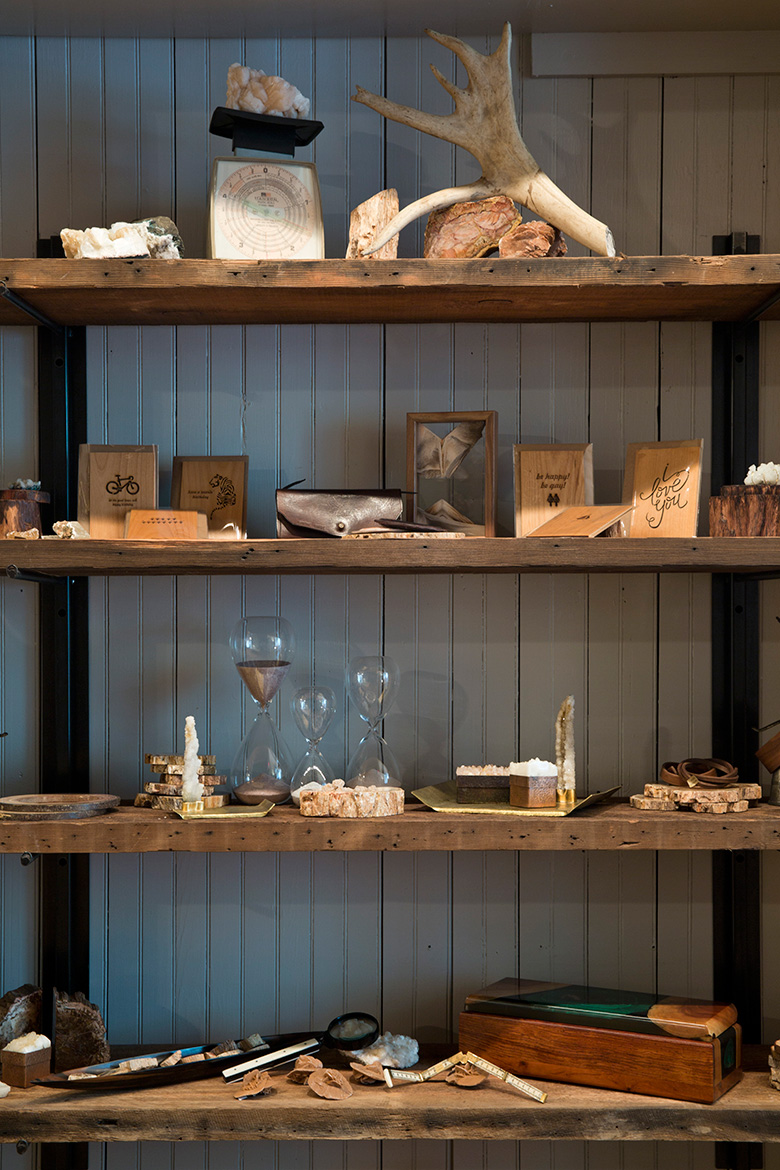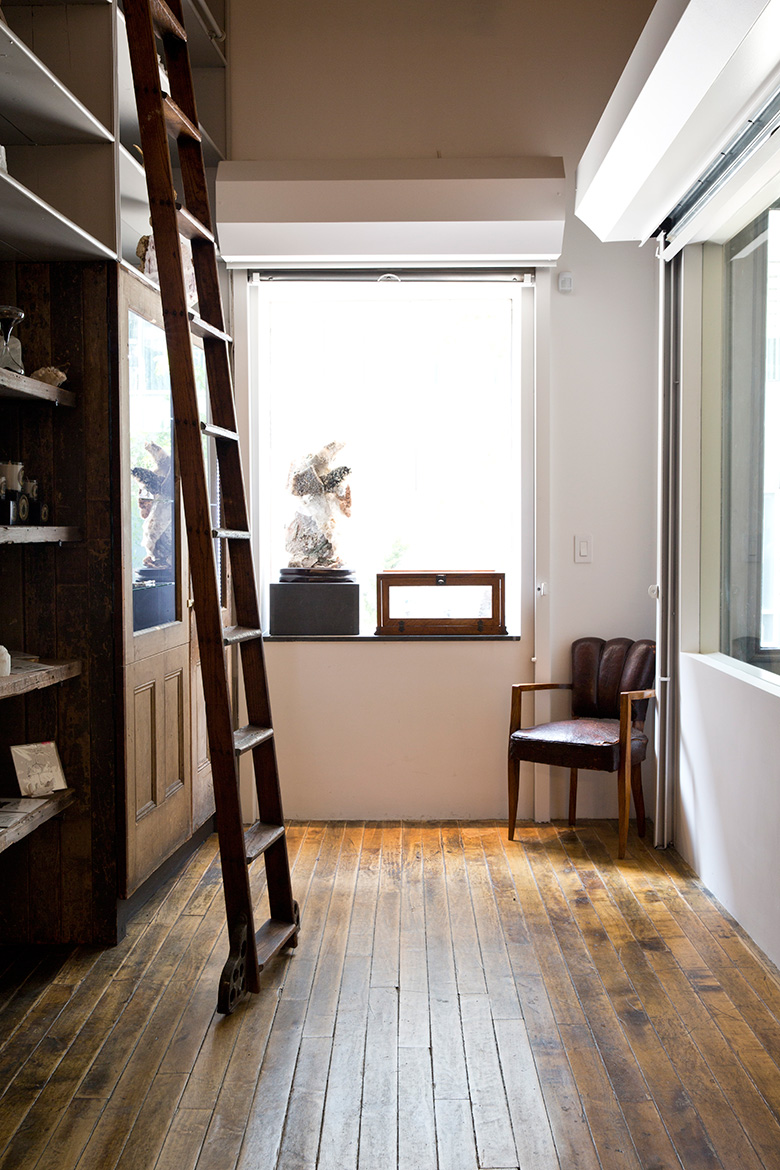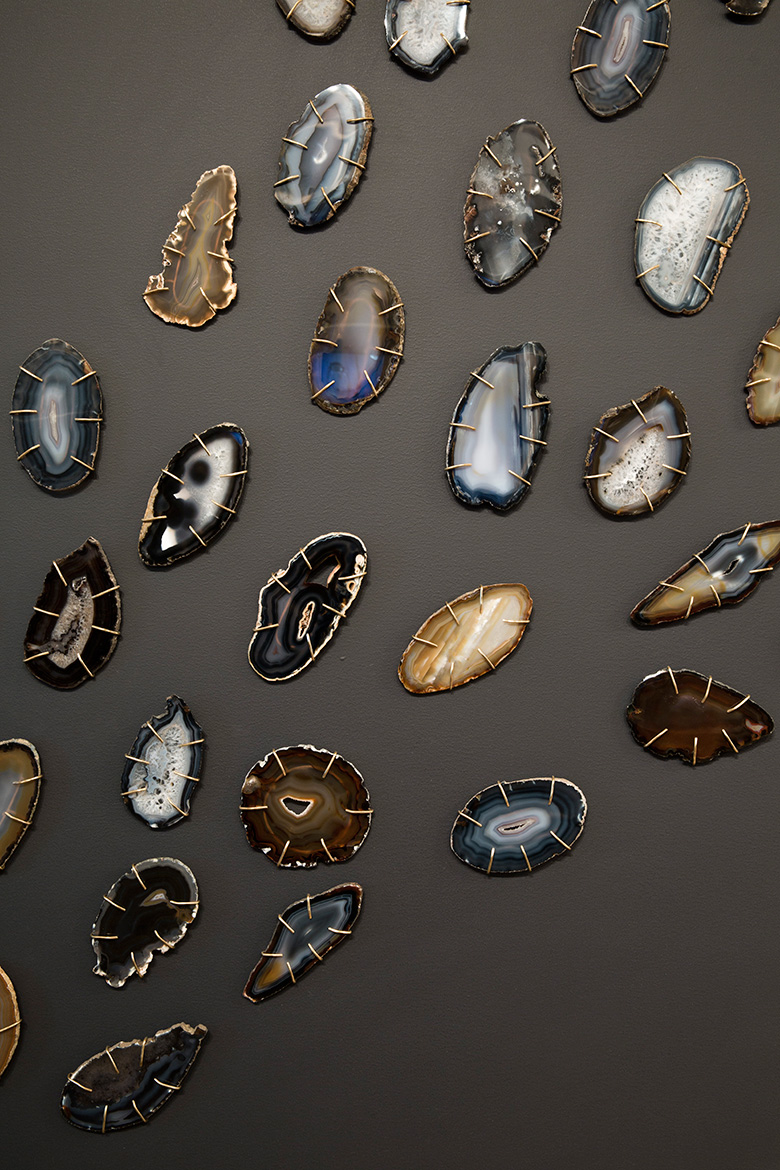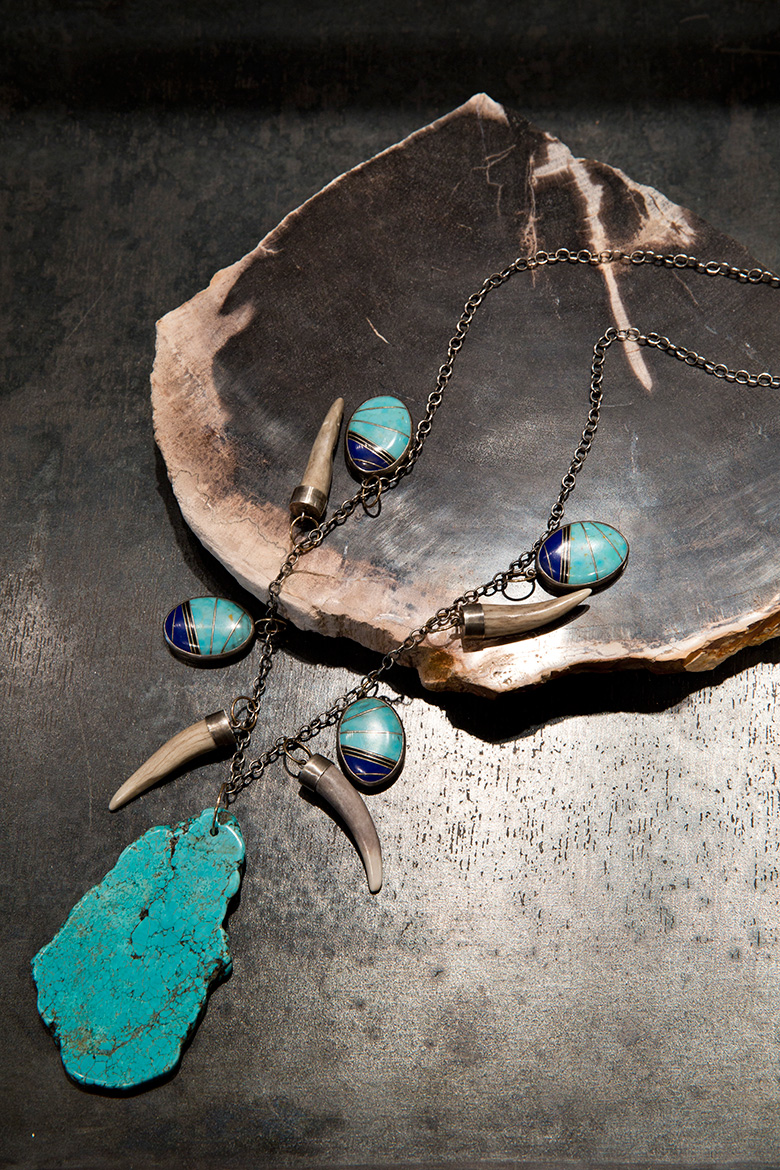Workshop Tour: Melissa Joy Manning
When jewelry designer Melissa Joy Manning started to look for a workshop and showroom in New York City, she knew she wanted a space that would feel genuinely reflective of her brand: All of her work is made domestically, by hand, using sustainable materials such as recycled metals and ethically sourced stones. The city’s SoHo district—Manning’s focus, the neighborhood was once a center of American manufacturing and now better resembles an outdoor mall. “I was beginning to feel that maybe my expectations weren’t realistic for what I really wanted to create,” she says. “I wanted to have more of a restoration project, something that was a nod to the original history of the area. Unfortunately, so much of SoHo has been stripped of its rich manufacturing history. The bones of the buildings are all so beautiful, but most of the buildings I had seen had already been redone, [and] maybe not in a style that worked with mine.”
“I wanted to have more of a
restoration project, something that was a nod to
the original history of the area.”
________
Years passed—until one day, she got a call from her real estate agent. A space at 12 Wooster Street had become available; would she consider having a look? The proposition came with an asterisk: Manning, the realtor told her, would have to bring her imagination.
A 19th-century textile manufacturing facility, 12 Wooster looked, from the outside, remarkably undisturbed. Inside, its age showed: Needles and sewing machine parts were strewn everywhere, clip lamps were stacked against relics collecting dust in the corner. “The downstairs space was kind of like American Horror Story, but filled with floor-to-ceiling architectural relics,” Manning says.
This was large part thanks to D. James Dee – also known as the “SoHo photographer”– who’d occupied the space since the 1980s. Dee was only the second owner of the building, and he had left its original elements largely intact. As a chronicler of the neighborhood, he’d had his pick of architecturally pleasing detritus from demolition sites for decades. “He was a bit of a hoarder,” Manning says. “So there were all of these architectural relics he’d collected when we moved in. He told us if we could use them, that we could keep them. So we did.”
Throughout her very hands-on restoration and design process, Manning repurposed many of those elements. In doing so, she’s repairing 12 Wooster to its original intention: as a center of industry. “To bring back the integrity of the space—that’s a true reflection of our brand,” she says.
“The building was constructed as a
manufacturing facility to support the garment industry
in New York, so there’s this real strong
sense of American craft.”
________
Below, Melissa Joy Manning takes us on a tour of her New York City workshop.
The building was constructed as a manufacturing facility to support the garment industry in New York, so there’s this real strong sense of American craft. The relics that we found here—the old sewing machines, all the needle parts—were made with such integrity. They’re beautiful, useful objects, manufactured in a way that we don’t necessarily do in the United States anymore. These pieces last; they’ve lasted with no care. Here is something that someone made in the 1880s, rusting in the corner, and all you did was dust it off and you can use it again.
I’m a very strong believer in American-made products and the social component of sustainability. This space is a very tangible example of that and really resonates with my philosophy of sustainability. The attention that makers had in their craft needs to come back.
We used so many of the architectural and design relics we found in our build-out process. The original fire doors we repurposed into tables in both our showroom and our workspace. There are two giant vintage safes that have been here since the building was built, which we had rewired. They’re now our working safes, housing all of our raw materials and finished products.
We always get comments on these two really long vintage cases with beautiful cast-iron feet. Amazingly, they were built for the space by Canal Display Company, on Canal Street, in the 1890s. They have only have ever lived here. All we did was replace the top glass, clean them up, and add lighting. Now they’re displaying what we make here.
I studied sculpture in school, and I like to think large scale sometimes, so this project was a great exercise in being able to access a part of me that hasn’t necessarily been expressed through jewelry design. I designed this whole set of vertical cabinetry to display jewelry in the store. My architect told me I was crazy, that we’d never find six doors exactly the same width and finish, and we did downstairs. It was this amazing treasure trove.
The agate wall—I don’t know how I came up with it, really. I have been using those stones in my cuffs for years; I just love them, they’re a signature for us. For the wall, I wanted to do something sculptural. We made every piece of it, laid it out, and installed it. It’s very reflective of my team and me; I love that we’ve had our hand in the space.
The whole restoration process was incredibly inspirational. My jewelry work definitely changed afterwards. I think you can look at the “before” and there was some repetition and maybe some stagnancy. Afterwards, my mind got blown up. I’m thinking now as an artist beyond just jewelry—what else can we do?
Photographed by Nicole Franzen

